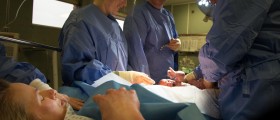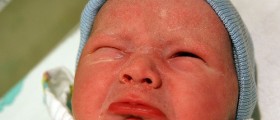
When we say there usually is no problem with having an anterior placenta, it automatically follows that there are some cases in which a front-lying placenta can present a challenge. These cases are related to cesarean sections. Placentae sometimes attach to the incision line, and that is of course on the front wall of the uterus. Women who had a previous c-section have an increased risk of placenta accreta, where the placenta grows too deep into the uterus and has trouble detaching. Therefore, women who have had a cesarean section and now have an anterior placenta should be more carefully monitored.
Likewise, if you need a c-section and have an anterior placenta, the operation can be more complicated because cutting into the placenta as the uterus is opened presents a risk. In these cases, your surgical team will do their best to avoid the placental site. Apart from these circumstances, the only "problem" with an anterior placenta is not being able to feel your baby kick as quickly, because the placenta will cushion movement in the area you would usually feel it. This is a bit of a shame, but you will usually still start feeling fetal movement at about 24 weeks.












Your thoughts on this
Loading...